Yes, we’ve already received the novel Thrawn: Alliances, which saw Grand Admiral Thrawn and Darth Vader be dispatched to the remote world of Batuu on a secret mission for Emperor Palpatine in the final days before the original Star Wars trilogy, and we’ve gotten the young-adult book Pirate’s Price, which contains the fully-fleshed-out backstory of the Millennium Falcon: Smuggler’s Run attraction, but we have yet to get our eager little nerd hands on a direct tie-in story to Star Wars: Galaxy’s Edge, the massive, 14-acre theme-park land now open at both Disneyland and Walt Disney World Resorts.
Until now, that is.
Galaxy’s Edge is a five-part comic-book miniseries that centers upon the mysterious and already-legendary figure of Dok-Ondar, who was originally created for the themed area but who was first (slyly) referenced in last summer’s Solo: A Star Wars Story (he was one of many “illustrious” underworld guests on the luxury yacht of the high-ranking crime boss Dryden Vos, though he’s never seen on-screen). Dok, of course, runs Dok-Ondar’s Den of Antiquities, one of several highly-themed shops in Galaxy’s Edge that carries a wide assortment of rare and treasured items, ranging from ancient lightsabers to the costumes and stone busts of both Jedi and Sith masters (there is also a healthy assortment of the more standard theme-park fare, such as mugs, patches, and journals, we should note). But it’s the store’s voluminous Easter eggs, spread out along both of its two floors, that look to steal the show, and it is these nods to all three trilogies in the Star Wars saga that are highlighted and expounded upon in the new comic.
Why is the First Order on Batuu?
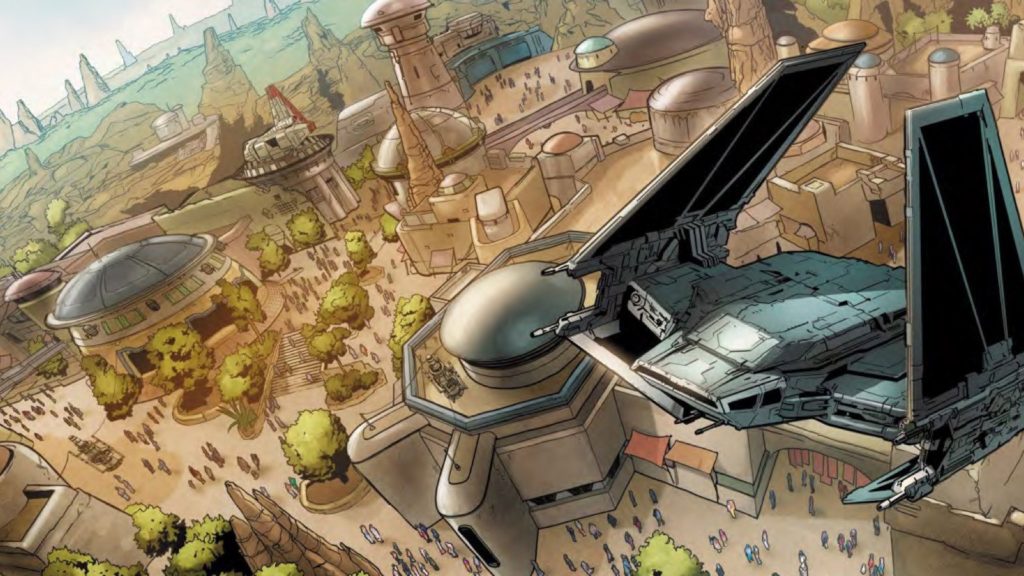
Much hay has been made by Disney on the sudden appearance of the now-openly-at-war First Order, suggesting that the fascistic regime is looking for something in the ancient trading port that is Black Spire – and that the Resistance has arrived in response to the always-expanding neo-Imperials. Galaxy’s Edge #1 is our first indication that the situation is actually backwards: General Leia Organa’s rebels arrived first, with Kylo Ren’s enforcers only showing up afterwards to snuff them out.
There’s actually one brief scene with the would-be galactic conquerors, who have only just arrived at the outpost (which places this comic book one or two weeks before the theme-park land), and it contains this little gem of a conversation between a lowly stormtrooper sergeant and the brand-new character of Lieutenant Agnon, who would seem to be an important player in the coming months of Star Wars storytelling:
Sergeant: “There are Resistance scum hiding somewhere out here on Batuu – and the Red Fury will burn down this entire rats’ nest to smoke them out, Lieutenant Agnon!”
Agnon: “I expect nothing less, Sergeant. And before we are done, Batuu will never be the same.”
(Let’s just pause for a moment and remind everyone that the Red Fury is actually the 709th legion, a stormtrooper unit created expressly for Galaxy’s Edge that is itself seemingly being primed for a much larger presence in the greater mythos.)
In retrospect, having the Resistance arrive first is actually exactly what Galaxy’s Edge’s backstory has in place – the novel Galaxy’s Edge: Black Spire, which released some four months after the Galaxy’s Edge miniseries started publication, shows Vi Moradi, the Resistance’s top spy, landing on Batuu to look for refuge and new allies after the crushing Battle of Crait, with the First Order hot on her tail. The comic was not only setting up and exploring Dok-Ondar’s character and personal history, then, it was also hinting at the larger, fuller story at play, meaning that the tie-in materials‘ chronology looks a little something like this: Black Spire sets up Galaxy’s Edge, which, in turn, sets up the theme-park land itself. (And just to make this progression even more interconnected, the character of Vi originally hailed from other novels elsewhere in the canon.)
What’s the most exciting about this little nugget, though, is the suggestion that the Outer Rim planet won’t be the same after the First Order leaves, which implies that Disney and Lucasfilm will have even more stories set in Black Spire Outpost after the themed area’s current timeframe. An even more intriguing possibility is just what form these additional adventures will take – more comics? Videogames? Or, even, Galaxy’s Edge itself? Remember, the Mouse House is breaking new ground here by essentially making the land a specific installment in the Star Wars timeline – might the company push that envelope even farther by moving Star Wars Land’s setting further on down the narrative road (to, say, after Episode IX: The Rise of Skywalker instead of before it) at some point over the next several years, to provide incentive to see how all these characters and experiences you’ve already met and had change once the new Galactic Civil War is over?
Given just how much narrative detail Disney is imbuing into every single facet of its most ambitious project to date, it’s not far-fetched at all to ask.
The tale of the baby sarlacc
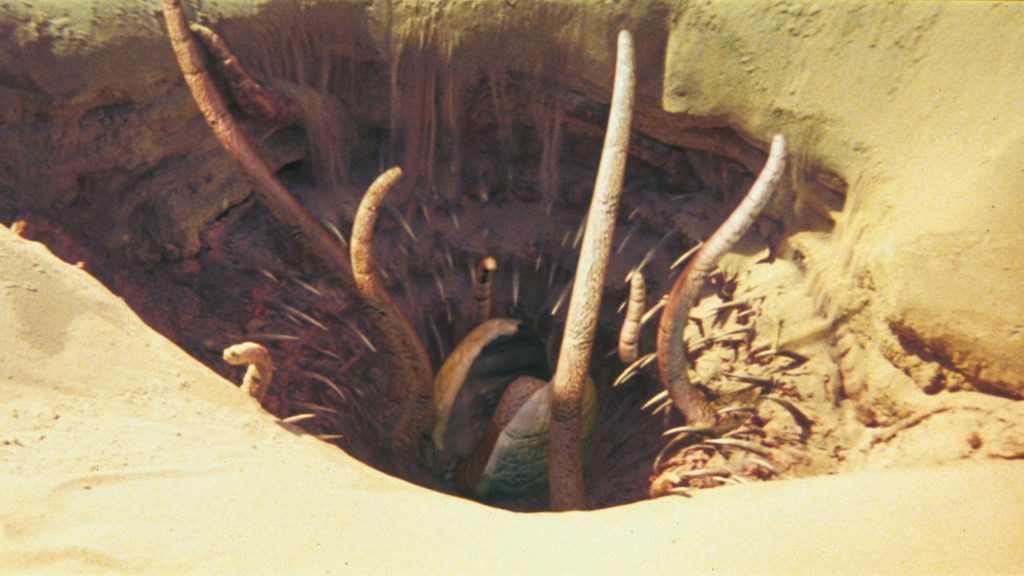
Galaxy’s Edge #1 is primarily concerned with telling the story of how Dok-Ondar received what already seems to be one of the coolest Easter eggs in his Den of Antiquities, the baby sarlacc that sits suspended in a glass aquarium (which is realized, of course, by using audio-animatronics) – a dangerous task that only Han Solo would be foolish enough to take on during the time period just before the advent of the original trilogy (which places the comic series just a year or so after the events of Thrawn: Alliances). He, Chewbacca, and the legendary Millennium Falcon arrive on Batuu with the baby beast in their possession, and Dok pays them handsomely for their (nearly fatal) efforts.
But what is perhaps more interesting is the larger narrative that the comic sets up in the background, beyond the arrival of Resistance-scum-chasing stormtroopers and flashbacks with well-established characters. The mysterious Kendoh is introduced in this issue, who heads up her own team of what appear to be smugglers and who is eager to convince Dok-Ondar, an Ithorian who can get anything for anybody for the right (usually exorbitant) price, to procure for her an “exotic” – and incredibly powerful – weapon that was supposed to have been lost years earlier. “There are some things that even Dok-Ondar will not traffic,” the alien says of himself, and promptly kicks his would-be clients out – but not before they surreptitiously leave behind a surveillance bug.
Again, the question remains how much of this will be relegated to the Expanded Universe (that mammoth collection of novels, audiobooks, comic books, short stories, and videogames) and how much will seep out into the theme-park land itself – and, if it’s the former, how much readers of this comic will be rewarded for their investment of time (hey – the book Pirate’s Price seems to have this particular approach covered in spades, so why not do it here, as well?).
The tale of the lightsaber
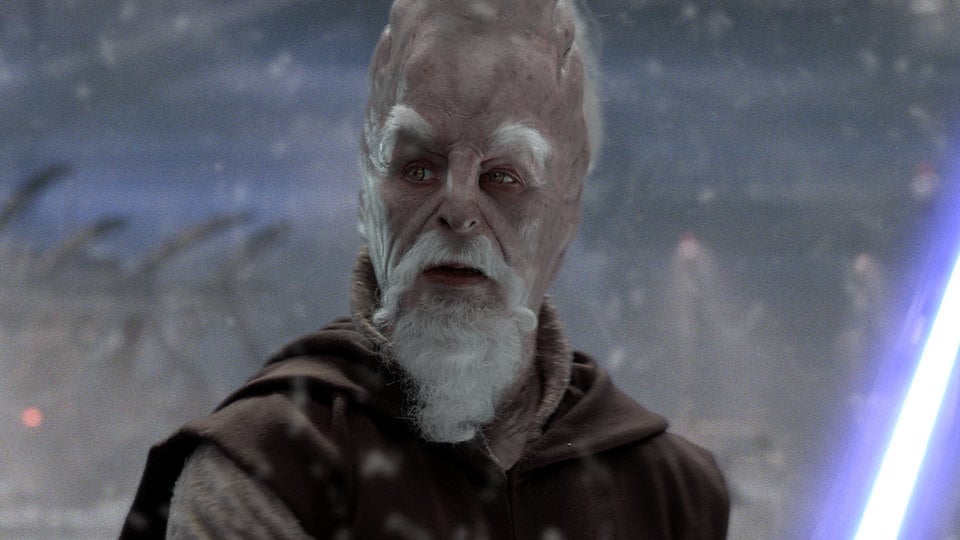
Another of the Den of Antiquities’s most treasured items is a genuine lightsaber from a fallen Jedi Knight who perished decades past, during the Jedi Purge and the birth of the Galactic Empire. Issue #2 follows this particular story thread, showing how the owner was none other than Master Ki-Adi-Mundi – one of the members of the Jedi Council throughout all three films of the prequel trilogy – and how Greedo, a (bungling) bounty hunter in the employ of the powerful Jabba the Hutt, manages to accidentally come across it (during a botched mission against the vice chairman of the InterGalactic Banking Clan, Anolo, on the planet of Mygeeto, which was the site of Ki-Adi-Mundi’s death).
The procurement of the Jedi master’s lightsaber actually proves to be a boon for Greedo, as it manages to somewhat salvage his failed op – the relic ends up fetching a rather large price from Dok-Ondar, who is there at Jabba’s palace to pick up a previously-scheduled prize, a “dianoga pup” (which, yes, constitutes yet another Easter egg in the Galaxy’s Edge shop). With the crime lord’s profits just doubled, he decides to let Greedo slide and gives him instead one final task to complete: a “simple” bounty against none other than Han Solo himself – which not only means that this story takes place immediately before Episode IV: A New Hope, but also that the theme-park land has just made itself a small-but-indelible part of the mainline Star Wars continuity. Disney Parks and Resorts fans couldn’t ask for much more in the mythology department.
As noteworthy as all this is, however, the real meat of the story – just as with the first issue – lies in the continued setup of Kendoh and her merry band of mercenaries. The payoff here is small and quick but certainly important: the ancient weapon that she’s after, the one that Dok-Ondar is hiding from her and, now, the First Order as well, is an ancient Sith relic. “If Kylo Ren and the First Order ever discovered [it],” the Ithorian tells his faithful assistant, “it would be far too much power in the wrong hands.” Since he obviously believes that the neo-Imperials already have a whiff of its whereabouts, he wishes to move the item – which is only shown in a highly-decorative container of some sort, red light emanating from within it – the following night… which means that Kendoh now has the opportunity to seize it that she’s been waiting for.
What makes this particular development so fascinating is that it’s the first hint that Kylo Ren, who’s already fascinated with such Sith artifacts as Darth Vader’s helmet, is on the hunt for ancient Force-related relics. And, as a corollary, the fact that Dok-Ondar views the First Order as being “the wrong hands” is also incredibly noteworthy, as well – maybe this impenetrable gatekeeper to the galaxy’s underworld has some scruples about him, after all.
The tale of the kyber statue
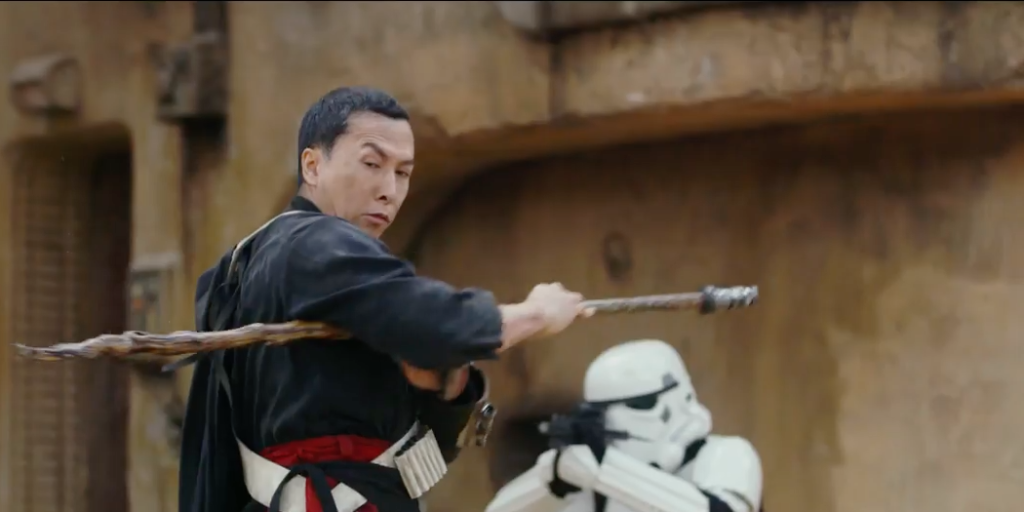
Interestingly enough, the third issue of Star Wars: Galaxy’s Edge is more set-up than actual payoff, introducing the brand-new character of Varg, Dok-Ondar’s fixer, and how he seems to penetrate Kendoh’s crew in an effort to disrupt their attempted score at the Den of Antiquities. Kendoh herself, meanwhile, is in the midst of her own little con, seeking out the nefarious Hondo Ohnaka to run some cargo past the newly-formed First Order blockade for reasons unknown (and just to complicate matters even further, Hondo is apparently spinning his own schemes, as he’s secretly being fed what to say to the mercenary by none other than Dok-Ondar himself. Wheels within wheels…).
What readers do get in the latest comic-book installment is a whole host of cameo appearances: by Hondo, by Doctor Chelli Lona Aphra (the star of her own comic series that is set in between Episode IV: A New Hope and Episode V: The Empire Strikes Back), and by Chirrut Imwe, one of the main cast of Rogue One: A Star Wars Story. It is the blind Guardian of the Whills that gets, arguably, the biggest beat in the story, as he, in a flashback, allows Dok and his hired muscle, Hondo Ohnaka, to escape from the Temple of the Kyber on the planet Jedha after hearing a heartfelt (and mostly true) plea from the Ithorian black-market dealer as to why he should be allowed to possess just one of exactly 2,304 statues that line the tunnels leading to the temple. It’s a moment that not only perfectly illustrates Chirrut’s fighting prowess, but also his compassion and empathy – for a character who, so far, has only appeared in his originating film and a prequel young-readers novel, every last usage of him is inherently noteworthy.
It is this 2,000-year-old statue, showing an ancient Jedi-type facing off against a coiling, fantastic serpent, that is meant to be the McGuffin of the issue, of course. It was sculpted by a Jedi Knight using his lightsaber, and it is still connected to the larger kyber crystal it was fashioned from – until Dok uses his own lightsaber (the one procured from the previous issue?) to slash it free from its millennia-old base.
And while there is no convoluted story about how it was obtained – like Han Solo having to blunder his way through a double cross, or Greedo botching an extraction mission – it is used to interesting dramatic effect: as a method of revealing Dok-Ondar’s character. “This isn’t about money for me,” he pontificates to Ohnaka. His simple gardener parents, it turns out, were murdered for some sort of archaeological secret, and “with every Jedi and Sith relic I find, I feel closer to them.”
That explains the plethora of historical merchandise Disney has stuffed his flagship shop with, then – and, perhaps, his reluctance to let anyone else have the mysterious Sith relic he’s been secretly hiding away.
The tale of the Sword of Khashyun
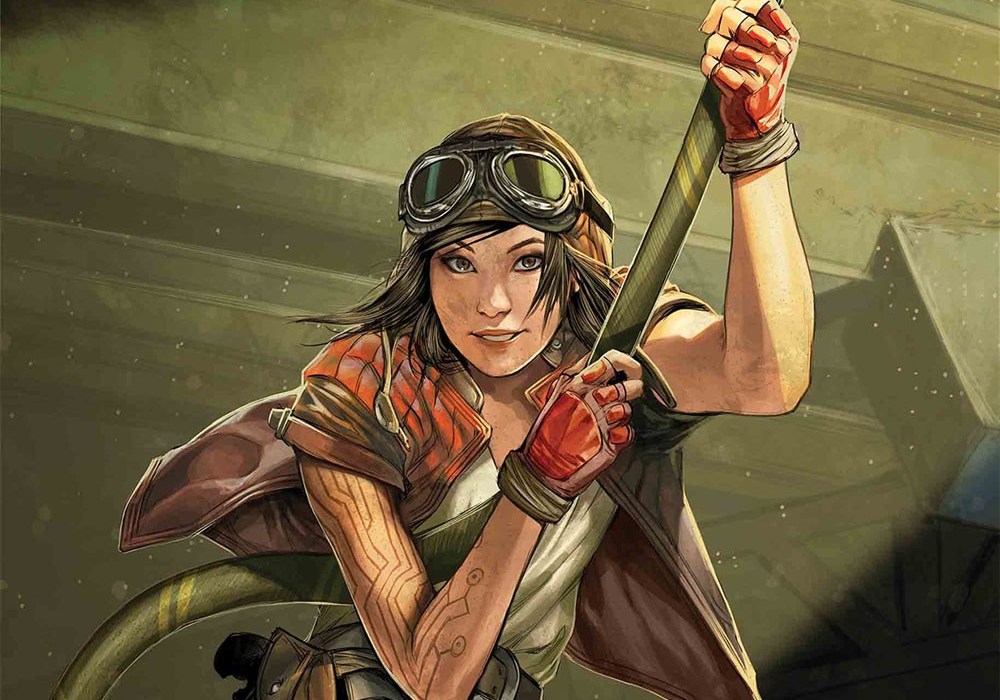
At this point in the Galaxy’s Edge miniseries, we now know what ancient, powerful weapon Kendoh and her gang of mercenaries are after, and we’ve seen them finally make a play to snatch it away from Dok-Ondar. We also have gotten more information on the grizzled Ithorian’s past and have possibly seen the First Order storyline come to something of a climax (remember, the first issue began with the newly-dominant neo-Imperials arriving on Batuu).
All of these really service the comic’s stated goal of fleshing out Dok-Ondar and his Den of Antiquities and helping to fill in the theme-park land’s backstory (we even see the First Order begin to hunt down and kill the small presence of Resistance operatives in Black Spire Outpost). But it’s in another, unexpected way that the title has really shined – its interweaving of these new elements seamlessly within the larger Star Wars universe, tying the criminal underlord into such releases as the prequel and original trilogies, Rogue One, and, in an extended way, both The Clone Wars and Rebels.
And it is on this front that issue #4 really delivers. The central McGuffin of the entire plot is revealed to be the legendary (though just-established) Sword of Khashyun, which was designed by a sect of ancient Sith warriors who “believed that lightsabers were for the weak.” It’s a traditional blade, albeit one now shrouded in myth – the Dowutin devotees who fashioned it claimed that “only a truly worthy warrior would have the strength to wield it,” imbuing it with Arthurian overtones. In order to retrieve it some 35 years ago, Dok hires Doctor Chelli Lona Aphra, one of the major pillars of the new Star Wars continuity (at least, in the comics), and sets off to no other planet than Moraband, the homeworld of the Dark Lords of the Sith (and a location seldom visited across all of the various television shows, novels, and comic books). The artifact is safely retrieved, Dok-Ondar feels closer than ever to his long-dead parents, and everyone is happy (save for the double-crossing Aphra, that is, who ends up being abandoned on the long-dead world after her betrayal backfires).
At some point along the way, however, the blade gets separated from its hilt, with the Ithorian proprietor only able to hold on to the latter. Kendoh herself manages to acquire the former, and now with a “mysterious patron” willing to pay handsomely for both parts, she’s arrived on Batuu to retrieve the supposedly-powerful weapon… but Dok-Ondar deploys a lethal security droid, 8K-86, on the would-be thieves, and a company of First Order stormtroopers has suddenly descended on the store, finally making both of the long-simmering storylines collide into one.
There is just one last item from this installment of Galaxy’s Edge to note, one that might make for a nifty bit of trivia when you’re milling about outside the gift shop in Galaxy’s Edge: one of the elaborate statues outside of the Den of Antiquities is a grave marker for Dok-Ondar’s two parents, and he’s occasionally seen stopping beside it and solemnly telling his beloved mother and father that he hasn’t forgotten them.
–
Uncover everything there is to know about Star Wars Land in our complete insider’s guide. Then discuss it all – including your unbridled excitement to visit Black Spire Outpost for yourself – with thousands of other vacation planners in our OI Community Facebook group.
And be sure to follow Orlando Informer on Facebook, Twitter, and Instagram for the latest news and tips at Universal Orlando, Walt Disney World, and other Orlando experiences.

